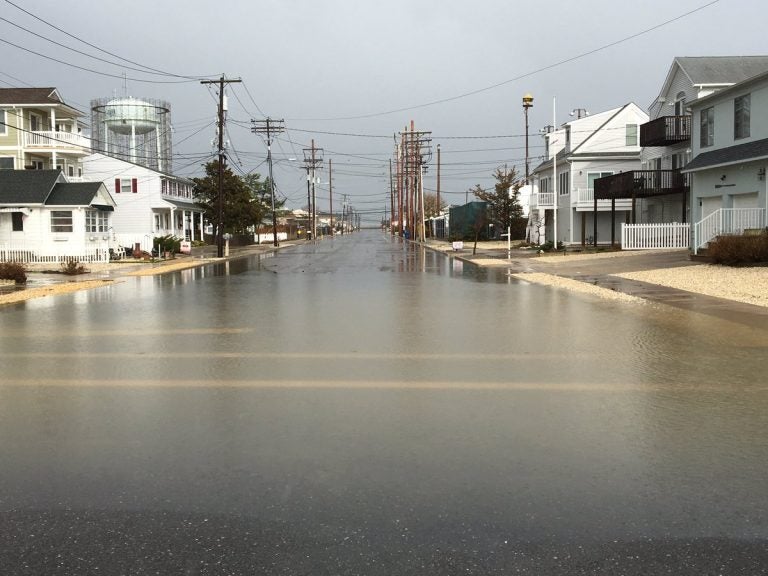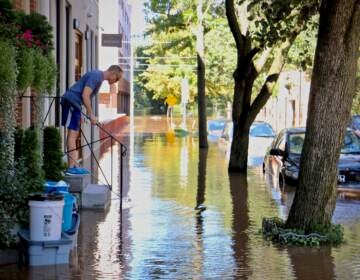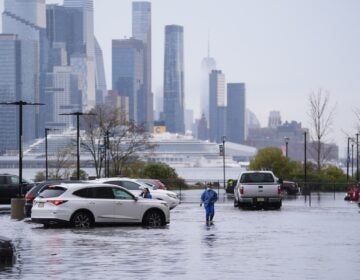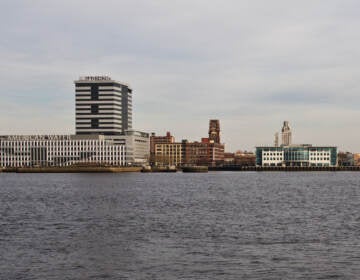High tide flooding ‘growing in leaps and bounds’ in Mid-Atlantic, NOAA says
NOAA predicts the Mid-Atlantic could see nine to 14 days of high tide flooding this year — roughly three times as many days as the region saw in 2000.

A file photo of minor tidal flooding in Seaside Park. (Image: Dominick Solazzo)
This story is part of the WHYY News Climate Desk, bringing you news and solutions for our changing region.
From the Poconos to the Jersey Shore to the mouth of the Delaware Bay, what do you want to know about climate change? What would you like us to cover? Get in touch.
High tide flooding is getting worse in many coastal areas across the country, including the Mid-Atlantic.
Government forecasters say the region will experience some of the most high tide flooding days out of any U.S. region this year.
“High tide flooding …. is for the most part accelerating on an annual basis in this part of the country, meaning impacts are growing in leaps and bounds,” said William Sweet, an oceanographer at the National Oceanic and Atmospheric Administration.
High tide flooding — also called sunny-day or nuisance flooding — can block roads or close businesses even on days when there is no rain.
It’s getting more frequent as human-caused climate change causes sea levels to rise, affecting areas along tidal rivers, streams, and backbays, including those that did not previously experience this type of flooding.
In parts of the Mid-Atlantic, land is also sinking. This year, El Niño is expected to make things worse, NOAA officials said.
NOAA predicts the Mid-Atlantic could see nine to 14 days of high tide flooding from this past May through next April. That’s roughly three times as many days as the region saw in 2000.
In the Philadelphia area, this year’s high tide flooding forecast is highest in Atlantic City — which NOAA predicts could see 9 to 15 high tide flooding days between this past May and next April. Lewes, Delaware is predicted to see eight to 13 days, Cape May six to 11, Philadelphia four to eight, and Delaware City two to four. All of these areas are expected to see at least as many days of high tide flooding this year as they saw last year.
NOAA projects these locations could experience more than 100 days of high tide flooding by the year 2050.
“By the time you recognize water coming out of the stormwater systems, water on the streets when it’s sunny outside, those impacts are going to become chronic rather quickly,” Sweet said.
A new online tool released by NOAA this summer offers more detailed forecasts on a daily or monthly basis throughout the year. It shows October as the month with the most days where high tide flooding is possible at the Philadelphia-area stations this year. The federal agency uses tide gauges at several water level stations throughout the region to collect data and predict flooding.
Nicole LaBoeuf, assistant administrator of NOAA’s National Ocean Service, says the new tool can help communities plan. For example, towns could use the forecasts to make decisions about staffing levels, when to close roads, or when to perform maintenance on storm drains.
“This data is used not to scare but to prepare,” LaBoeuf said.

Get daily updates from WHYY News!
WHYY is your source for fact-based, in-depth journalism and information. As a nonprofit organization, we rely on financial support from readers like you. Please give today.






